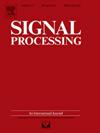基于运动特性和分布模式匹配的雷达目标跟踪
IF 3.4
2区 工程技术
Q2 ENGINEERING, ELECTRICAL & ELECTRONIC
引用次数: 0
摘要
降低真实雷达工作条件下的误报率是推进雷达目标检测算法的一个关键挑战。本研究提出利用多帧相关信息进行雷达目标跟踪是抑制误报的有效解决方案。我们提出了一种集成了运动特征和分布模式匹配的雷达目标跟踪方法,有效地利用了多帧雷达测量和回波幅度信息。这种方法可以通过轨迹一致性验证来减少误报。具体来说,该方法分为两个阶段:首先,应用基于运动特征的状态滤波来预测当前帧内先前检测的潜在候选区域;随后,在这些候选区域内,采用自监督Siamese网络的基于深度学习的相似性评估框架执行分布模式匹配以建立最佳数据关联。实验验证表明,该方法比基准算法的f1分数提高了5.82%,验证了该方法提高了检测可靠性和操作有效性。本文章由计算机程序翻译,如有差异,请以英文原文为准。

Radar target tracking based on motion characteristic and distribution pattern matching
The mitigation of false alarm rates under real-world radar operating conditions represents a critical challenge in advancing radar target detection algorithms. This study proposes that utilizing multi-frame correlation information through radar target tracking constitutes an effective solution for suppressing false alarms. We present a radar target tracking methodology that integrates motion characteristic and distribution pattern matching, effectively leveraging multi-frame radar measurements and echo amplitude information. This approach enables false alarm reduction through trajectory consistency validation. Specifically, the method operates in two stages: First, state filtering based on motion characteristics is applied to predict potential candidate regions for previous detections within the current frame. Subsequently, within these candidate regions, a deep learning-based similarity evaluation framework employing a self-supervised Siamese network performs distribution pattern matching to establish optimal data associations. Experimental validation demonstrates that the proposed method achieves a 5.82% improvement in F1-score over benchmark algorithms, confirming its enhanced detection reliability and operational effectiveness.
求助全文
通过发布文献求助,成功后即可免费获取论文全文。
去求助
来源期刊

Signal Processing
工程技术-工程:电子与电气
CiteScore
9.20
自引率
9.10%
发文量
309
审稿时长
41 days
期刊介绍:
Signal Processing incorporates all aspects of the theory and practice of signal processing. It features original research work, tutorial and review articles, and accounts of practical developments. It is intended for a rapid dissemination of knowledge and experience to engineers and scientists working in the research, development or practical application of signal processing.
Subject areas covered by the journal include: Signal Theory; Stochastic Processes; Detection and Estimation; Spectral Analysis; Filtering; Signal Processing Systems; Software Developments; Image Processing; Pattern Recognition; Optical Signal Processing; Digital Signal Processing; Multi-dimensional Signal Processing; Communication Signal Processing; Biomedical Signal Processing; Geophysical and Astrophysical Signal Processing; Earth Resources Signal Processing; Acoustic and Vibration Signal Processing; Data Processing; Remote Sensing; Signal Processing Technology; Radar Signal Processing; Sonar Signal Processing; Industrial Applications; New Applications.
 求助内容:
求助内容: 应助结果提醒方式:
应助结果提醒方式:


